The Enchanting Key Deer: A Miniature Marvel of the Florida Keys
The Florida Keys are renowned for their stunning beauty, vibrant coral reefs, and unique wildlife. Among the most captivating residents is the Key Deer, a diminutive subspecies of the white‑tailed deer. These gentle creatures, the smallest deer in North America, represent a remarkable story of adaptation, resilience, and ongoing conservation efforts. This article delves into the world of the Key Deer, exploring their history, behavior, habitat, and the crucial steps being taken to ensure their survival.
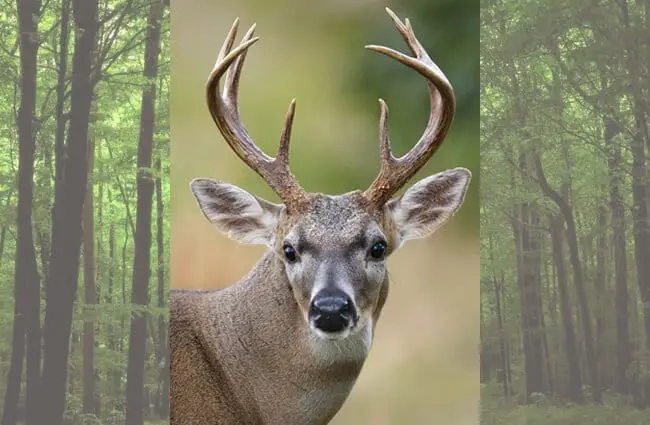
Origins and Evolution: A Story of Island Life
Tracing the Ancestry
The Key Deer’s story begins with the white‑tailed deer, which migrated to the Florida Keys during the last ice age when sea levels were lower. As the glaciers retreated and the islands became isolated, the deer population adapted to limited resources and a unique environment. Over centuries, natural selection favored smaller individuals, leading to the development of the Key Deer subspecies, Odocoileus virginianus clavium. This evolutionary process showcases the power of adaptation in response to environmental pressures.
A Unique Subspecies
Key Deer stand apart from their mainland cousins in several ways. Adults typically reach only 24 to 32 inches in height and weigh between 60 and 80 pounds, making them significantly smaller than most white‑tailed deer. Their coloration is generally reddish‑brown in summer and grayish‑brown in winter, offering effective camouflage within the island vegetation.
Habitat and Distribution: Life on the Islands
The historic range of the Key Deer encompassed most of the Lower and Middle Keys. Today, their primary habitat is limited to the National Key Deer Refuge on Big Pine Key, No Name Key, and a few surrounding islands. This area provides a mosaic of hardwood hammocks, freshwater wetlands, and mangrove forests – a critical combination for their survival. They thrive in areas with dense vegetation for cover and access to freshwater sources, which are essential, particularly during the dry season.
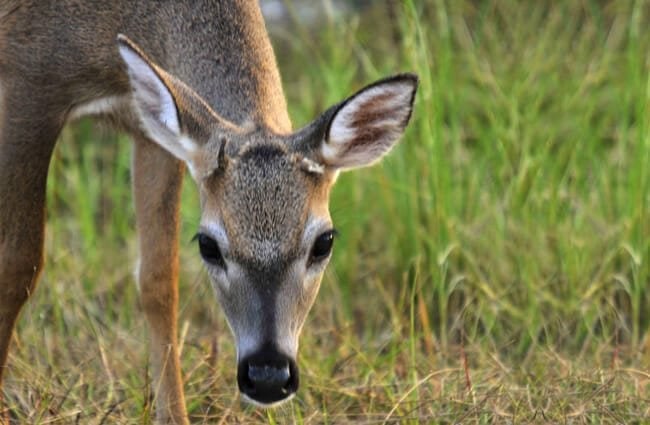
Diet and Foraging Behavior: What do Key Deer Eat?
Key Deer are herbivores, with a diverse diet that changes seasonally. Their primary food sources include saw palmetto berries, wild grapes, mangroves, sea oats, and various other plants found within their habitat. They are opportunistic feeders, consuming whatever is readily available. During the wet season, they graze on lush vegetation. In the dry season, they rely more on fruits, berries, and leaves. Their foraging behavior is often concentrated in areas with abundant vegetation and access to freshwater.
Reproduction and Life Cycle: Bringing New Life to the Keys
The Mating Season
The breeding season, or rut, typically occurs between February and April. Bucks compete for the attention of does through displays of strength and vocalizations. Antler development is crucial during this period. Bucks rub their antlers against trees to remove the velvet covering and mark their territory. Successful males mate with multiple does.
Gestation and Fawning
Gestation lasts approximately 200 days. Does typically give birth to a single fawn, though twins are occasionally observed, in May or June. Fawns are born with spotted coats, providing camouflage within the dense vegetation. The mother hides the fawn in a secure location, returning to nurse it several times a day. The fawn remains dependent on its mother for several months, learning essential survival skills.
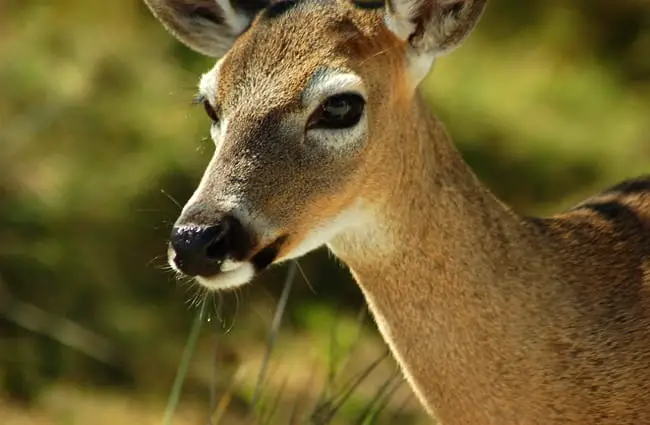
Ecological Role and Interactions: A Keystone Species
Key Deer influence plant growth and distribution as herbivores. Their foraging habits create openings in the vegetation, promoting biodiversity. They also serve as prey for predators such as alligators and, occasionally, bobcats. Their presence contributes to the overall balance and stability of the island ecosystems.
Conservation Status and Threats: Facing Challenges
Key Deer are listed as endangered species under the Endangered Species Act. Historically, their population declined due to hunting and habitat loss. Today, the primary threats include habitat fragmentation, vehicle collisions, and the impacts of climate change. Sea level rise inundates critical habitat, and increased frequency of extreme weather events poses a significant risk to the population.
Conservation Efforts
Numerous conservation efforts protect the Key Deer. These include habitat restoration, predator control, road improvements to reduce vehicle collisions, and public education programs. The National Key Deer Refuge plays a crucial role in providing a protected area for the deer to thrive. Continued monitoring of the population and habitat is essential to assess the effectiveness of these efforts.
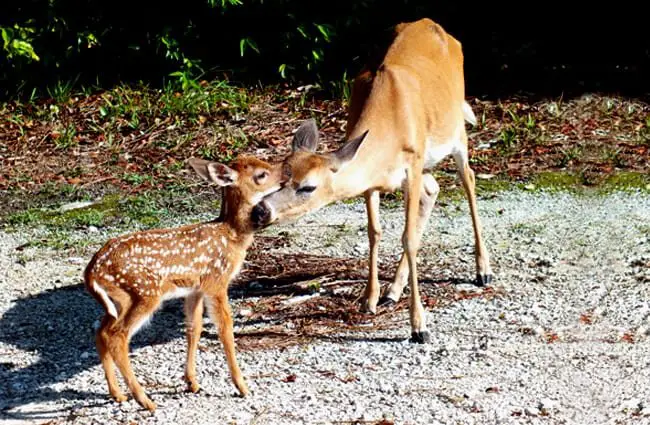
Encountering Key Deer in the Wild: A Responsible Approach
If you are fortunate enough to encounter a Key Deer while visiting the Florida Keys, observe from a respectful distance. Do not approach, feed, or attempt to touch the animal. Feeding deer can alter their natural foraging behavior and make them dependent on humans. Keep a safe distance to avoid startling them. Report any injured or distressed animals to the Florida Fish and Wildlife Conservation Commission.
Key Deer in Captivity: Care and Considerations
While not commonly found in zoos, if caring for a Key Deer in a captive setting, specialized care is required. Their diet should closely mimic their natural foraging habits, providing a variety of browse, fruits, and vegetables. Ample space for movement and enrichment activities is essential to promote physical and mental well‑being. Regular veterinary checkups and monitoring for common deer diseases are crucial. Minimizing human contact helps maintain their natural behaviors.
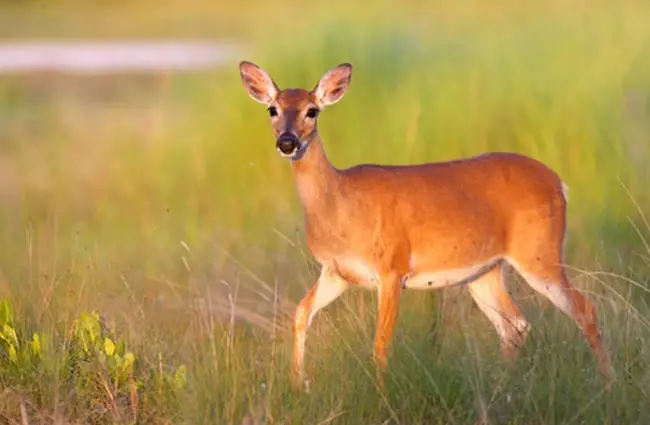
Fascinating Facts About Key Deer
- Key Deer are the smallest subspecies of white‑tailed deer.
- They are uniquely adapted to life on the islands of the Florida Keys.
- Their diet varies seasonally, depending on available food sources.
- They are an endangered species, facing numerous threats to their survival.
- They play an important role in maintaining the health of their ecosystem.
- Their population is estimated to be around 700 to 800 individuals.
- They can swim between islands to find food and mates.
- They are most active during dawn and dusk.
Key Deer stand as symbols of resilience and adaptation in the face of environmental challenges. Protecting these enchanting creatures and their fragile habitat is a testament to our commitment to biodiversity and the preservation of natural wonders for generations to come.

![Red Angus Closeup of a beautiful Red Angus cowPhoto by: U.S. Department of Agriculture [pubic domain]https://creativecommons.org/licenses/by/2.0/](https://animals.net/wp-content/uploads/2020/03/Red-Angus-4-238x178.jpg)




![Red Angus Closeup of a beautiful Red Angus cowPhoto by: U.S. Department of Agriculture [pubic domain]https://creativecommons.org/licenses/by/2.0/](https://animals.net/wp-content/uploads/2020/03/Red-Angus-4-100x75.jpg)

